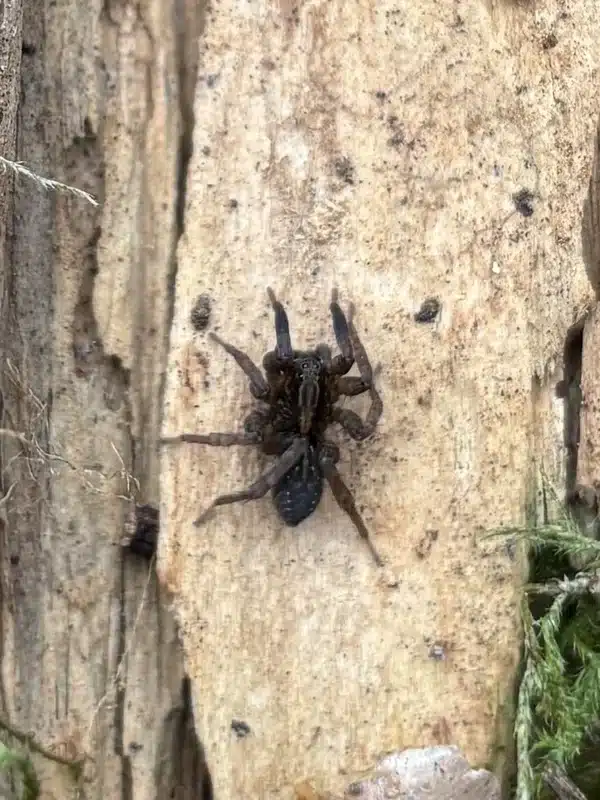If you’ve spotted a brown, fast-moving spider in your home, you might be wondering whether it’s a hobo spider or a wolf spider. These two spider types get confused all the time because they share similar coloring and quick movements. However, there are important differences that can help you tell them apart.
The confusion between these spiders often leads to unnecessary worry. In my years working in pest control across northern Virginia, I’ve seen countless homeowners panic about what they think might be a dangerous hobo spider. The reality is much simpler than most people realize, especially here in the DC metro area.
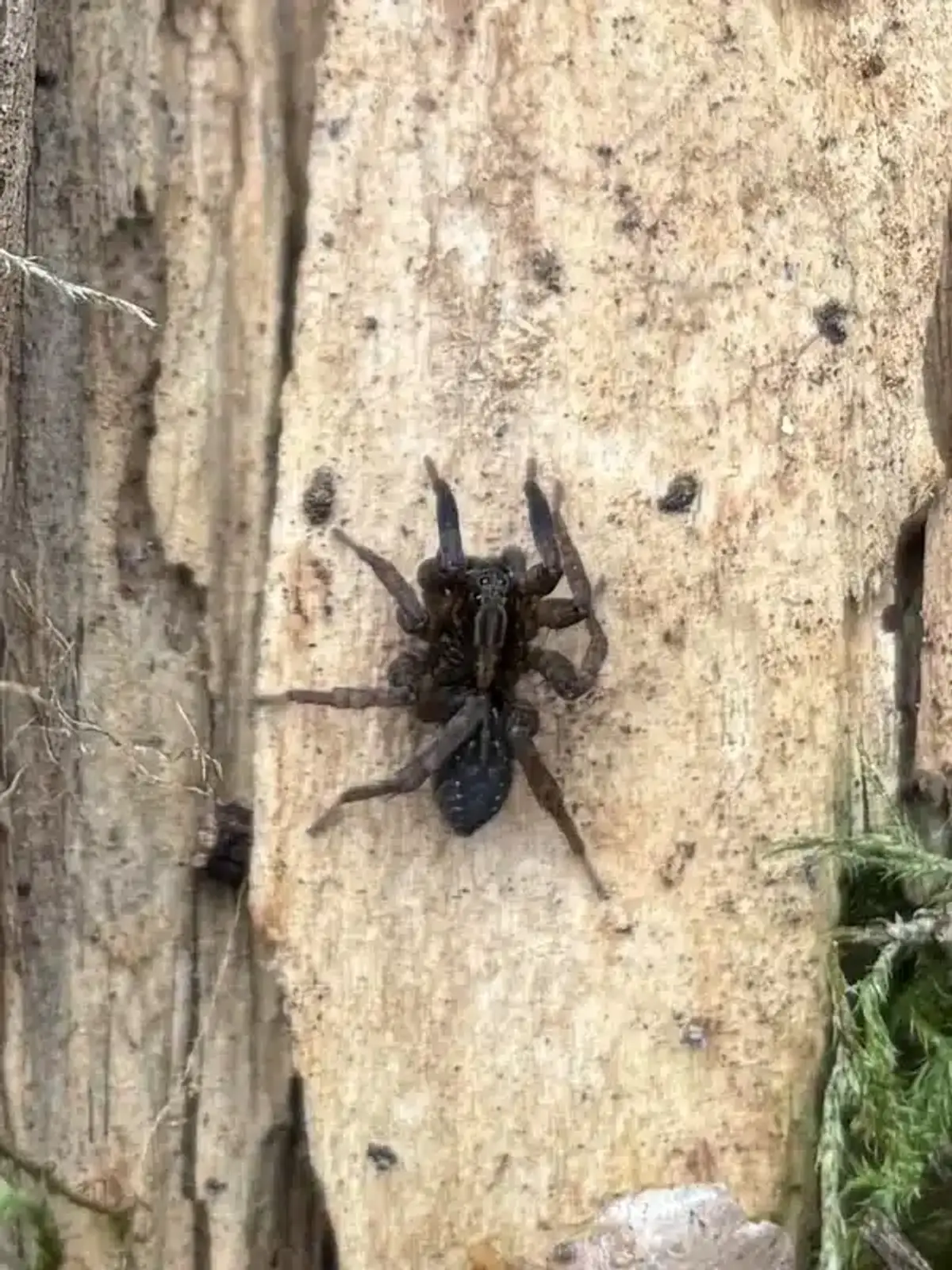
Geographic Distribution Makes Identification Easier
Before diving into physical differences, here’s something that might surprise you: hobo spiders aren’t found in Virginia, Maryland, or Washington DC. According to UC Davis Integrated Pest Management, hobo spiders are essentially limited to the Pacific Northwest and northern Rocky Mountain states.
This means if you’re seeing spiders in areas like Mt. Vernon, Sterling, or anywhere else in our region, you’re almost certainly looking at wolf spiders or other local species. Wolf spiders, on the other hand, are found throughout North America and are extremely common in our area.
During my work in wooded areas with high moisture, I’ve encountered plenty of wolf spiders but never a confirmed hobo spider. This geographic reality eliminates a lot of guesswork for homeowners in our region.
Eye Arrangement: The Most Reliable Difference
The easiest way to distinguish between hobo spiders and wolf spiders is by looking at their eyes. Wolf spiders have a distinctive three-row eye arrangement with two large, forward-facing eyes that look like headlights.
Hobo spiders have eight eyes arranged in two nearly straight rows of four. The difference is quite obvious once you know what to look for, though you’ll need to get fairly close to see the eye pattern clearly.

Web-Building vs Hunting Behavior
One of the biggest differences between these spiders is how they catch their prey. This behavioral difference often provides the first clue about what type of spider you’re dealing with.
Hobo Spider Web Patterns
Hobo spiders are web builders that create distinctive funnel-shaped webs. These webs start as a horizontal sheet that narrows into a funnel retreat where the spider waits. The silk isn’t sticky - instead, prey trips on the threads and the spider rushes out to catch them.
You’ll typically find these funnel webs in corners, around foundations, or in woodpiles. The webs are usually at ground level or in low areas.
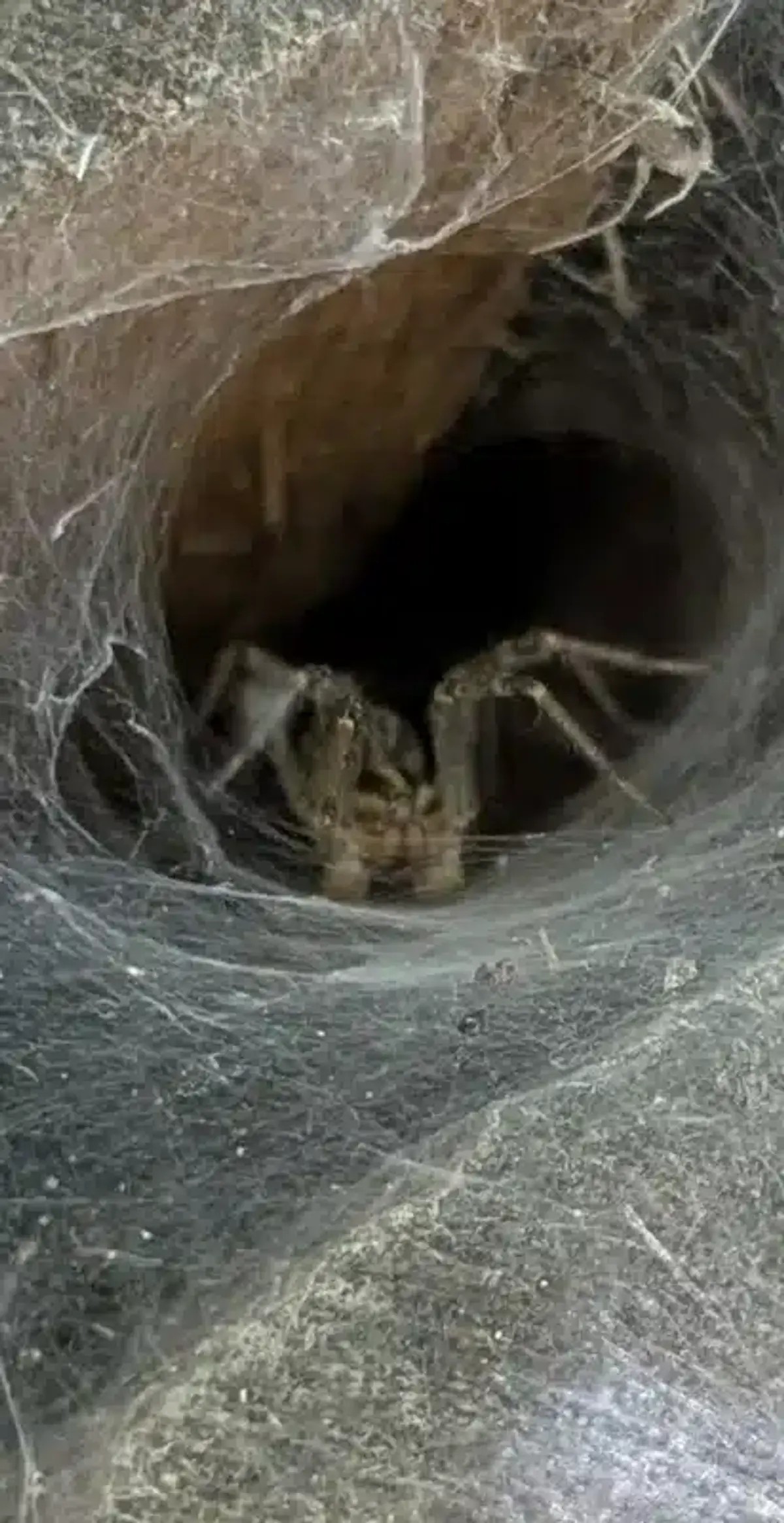
Wolf Spider Hunting Strategy
Wolf spiders don’t build webs to catch prey. Instead, they’re active hunters that chase down their food or wait in ambush. You might see them running across floors, walls, or outdoor surfaces as they hunt.
This hunting behavior explains why wolf spiders have such robust, hairy legs - they’re built for speed and agility. When I’m treating homes for spiders, I often see wolf spiders dart away quickly when disturbed.
Size and Physical Appearance
While both spiders can appear similar at first glance, there are notable size differences worth understanding.
Hobo Spider Size
Adult female hobo spiders typically measure 11-15 mm in body length (not including legs), while males are smaller at 8-11 mm. They have a brownish color with a somewhat muted appearance.
Wolf Spider Size Range
Wolf spiders show much more size variation as a family. Some species are quite small at less than 5 mm, while others can be impressively large. The Carolina wolf spider, common in our area, can reach 22-35 mm in body length, making it significantly larger than most hobo spiders.
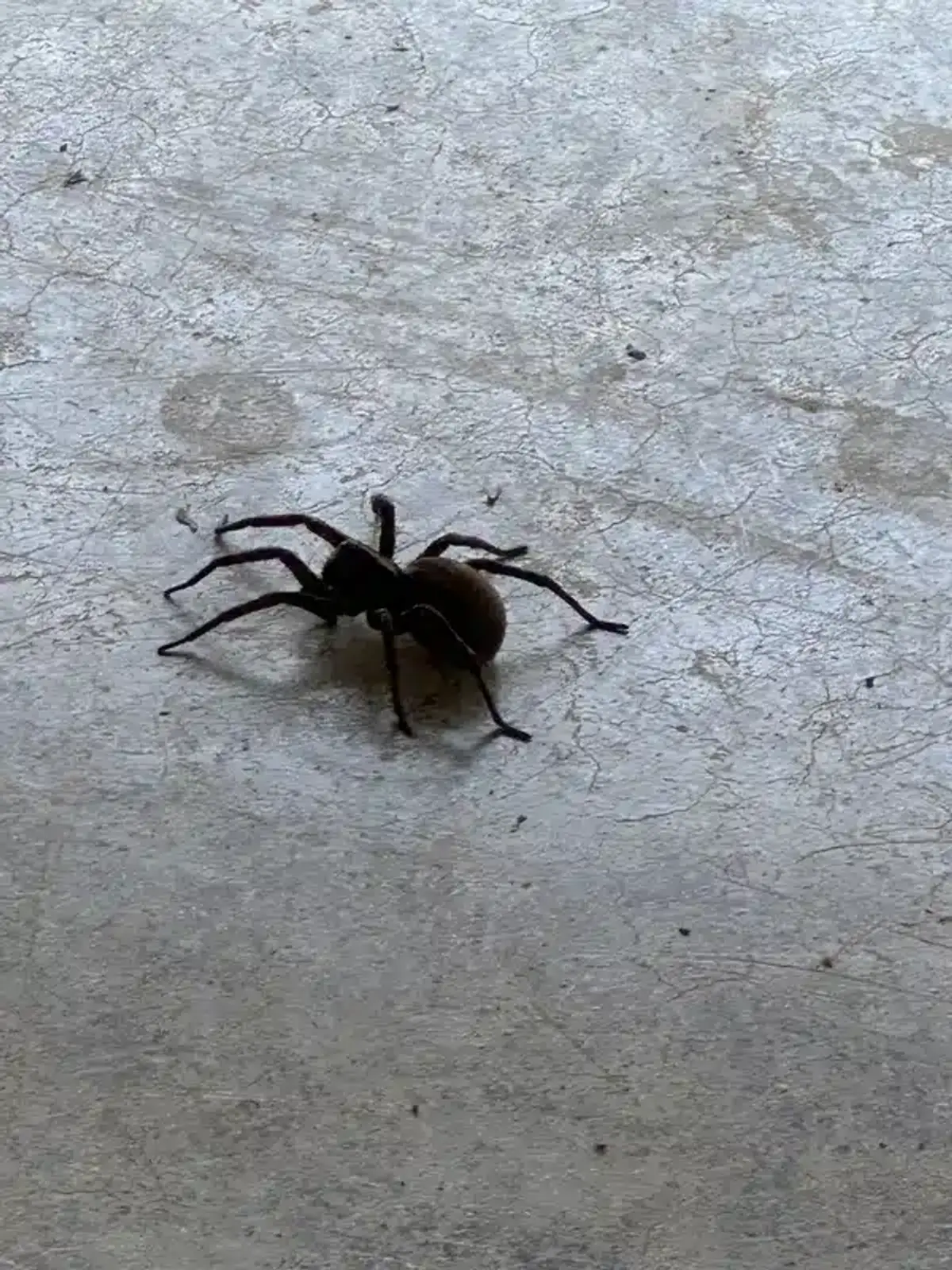
Wolf spiders often have more distinct markings than hobo spiders. Many species feature clear banding on their legs and arrow-shaped patterns on their backs. These markings can be quite striking and help with identification.
Hobo Spider vs Wolf Spider Comparison
| Feature | Hobo Spider | Wolf Spider |
|---|---|---|
| Geographic Range | Pacific Northwest only | Throughout North America |
| Eye Pattern | Two straight rows | Three rows, “headlight” eyes |
| Hunting Method | Funnel webs | Active hunting |
| Body Size | 8-15 mm | 5-35 mm (highly variable) |
| Markings | Muted brown coloring | Distinct banding & arrow patterns |
Speed and Movement Patterns
Both spider types can move quickly, but their movement styles differ based on their hunting strategies.
Wolf spiders are built for speed and can reach impressive velocities when chasing prey or fleeing threats. Research shows some wolf spider species can reach speeds of 15 cm per second routinely, with bursts up to 40 cm per second.
Hobo spiders can also move quickly, especially when rushing out from their funnel webs, but they generally rely more on web vibration detection than pure speed. Their movement tends to be more reactive than the proactive hunting style of wolf spiders.
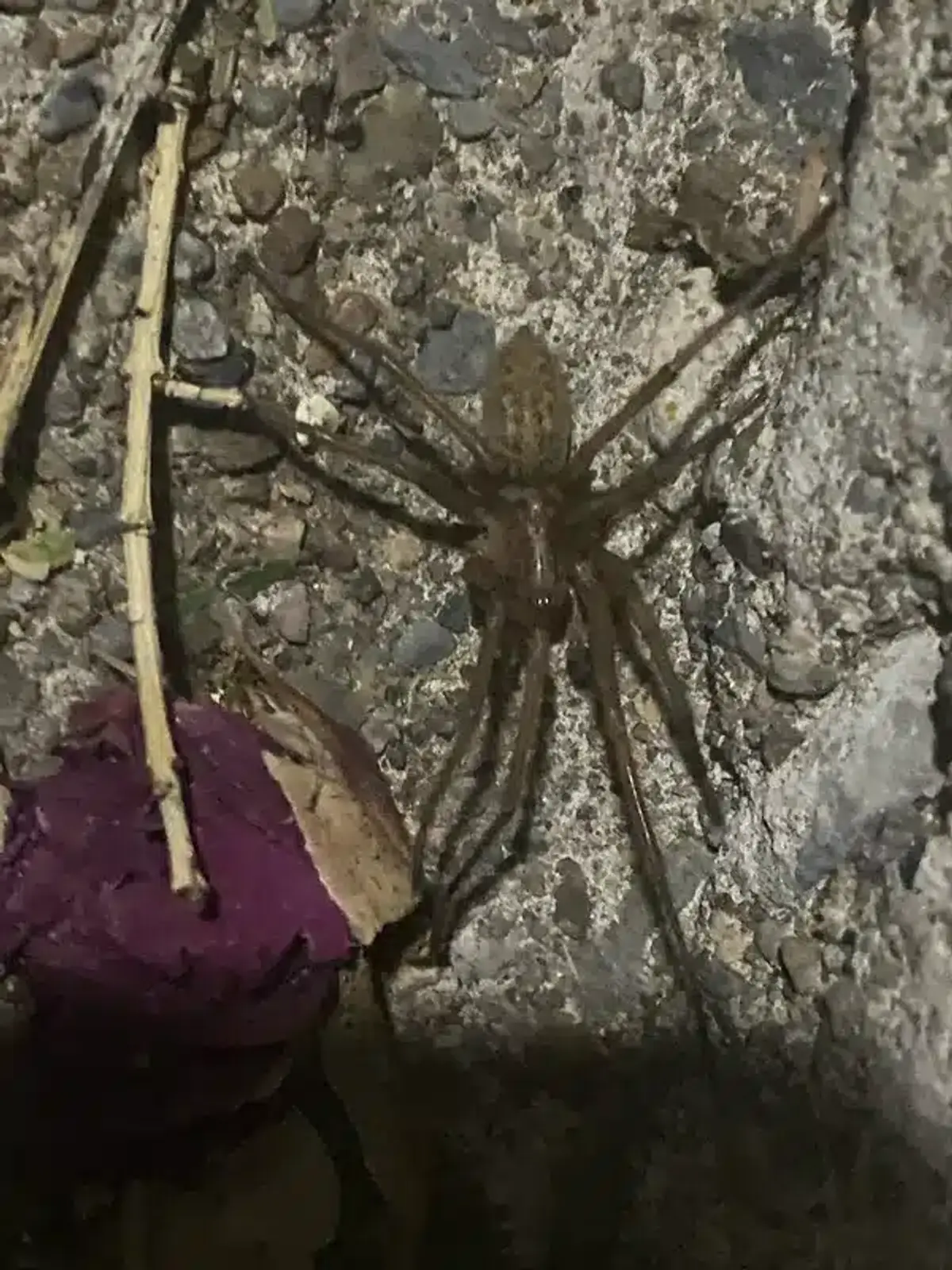
Habitat Preferences
Understanding where each spider prefers to live can help with identification and prevention.
Hobo Spider Habitats
Hobo spiders prefer outdoor locations like fields, rock piles, retaining walls, and woodpiles. When they do come indoors, it’s usually males wandering in late summer looking for mates. They tend to favor cool, low-traffic areas like basements or crawlspaces.
Wolf Spider Environments
Wolf spiders are much more adaptable and can be found in nearly any ground-level environment. They thrive in bare soil, grass, leaf litter, and under logs or stones. Some species even dig burrows with distinctive turret entrances.
In my experience treating homes in areas like Sterling and Brambleton, wolf spiders are commonly found around foundations, in garages, and occasionally inside homes. They’re attracted to areas where they can hunt other insects.
Seasonal Activity and Life Cycles
The timing of spider activity can provide additional identification clues.
Hobo spiders typically lay egg sacs in September, with spiderlings emerging the following late spring. Peak adult male activity occurs in August and September when they’re actively seeking mates.
Wolf spiders show more varied seasonal patterns depending on the species. Many overwinter as immatures and become active adults in spring. The Carolina wolf spider, for example, is active from March through October and hibernates during November through February.
During late summer and early fall, I notice increased spider activity generally. This is when homeowners often call about spider buildup, especially around the eaves of homes in wooded areas.
Bite Concerns and Medical Significance
There’s been considerable confusion about the medical significance of hobo spider bites, and it’s important to address these concerns with current information.
Hobo Spider Bite Myths
In the 1990s, some case reports linked hobo spider bites to necrotic lesions in the Pacific Northwest. However, modern research has debunked these concerns.
What does the science say?
According to peer-reviewed research published in NCBI, subsequent studies have found weak evidence for hobo spider bite necrosis claims. The research concludes that hobo spiders have not been reliably implicated in causing skin necrosis.
Both UC Davis Integrated Pest Management and the Washington Department of Health now officially list hobo spiders as “not considered dangerous” based on current scientific evidence.
Current scientific consensus suggests that hobo spiders have not been reliably implicated in causing skin necrosis. The “dangerous hobo spider” reputation was based on incomplete early research that has since been disproven.
Wolf Spider Bite Reality
Wolf spider bites typically produce only transient pain, redness, and mild swelling. According to Britannica, there are no documented cases of medically significant systemic effects from wolf spider bites.
Both spider types are generally non-aggressive and prefer to flee rather than bite. In my years of pest control work, actual spider bite incidents are quite rare - most spiders only bite when they’re accidentally trapped against skin.
Aggression Levels and Behavior
Despite their names and reputations, neither spider type is particularly aggressive toward humans.
The hobo spider was once called the “aggressive house spider,” but this name is misleading. The scientific name “agrestis” actually means “of the fields,” referring to their preferred habitat rather than their temperament. Field studies show they typically flee when disturbed unless they’re trapped.
Wolf spiders similarly avoid confrontation with humans. They’re much more likely to run away than stand and fight. Their speed and agility make escape their preferred defense strategy.

Why Proper Identification Matters
Accurate spider identification is crucial for several reasons that go beyond simple curiosity.
First, misidentification often leads to unnecessary fear and inappropriate treatment responses. I’ve seen homeowners panic about perceived “dangerous” spiders that are actually harmless local species.
Second, effective pest control depends on understanding spider behavior. Knowing whether you’re dealing with web-builders or hunters changes the treatment approach completely. For web-building spiders, we focus on removing existing webs and treating areas where new webs might form. For hunting spiders like wolves, we target areas where they travel and hunt.
Professional identification usually requires microscopic examination of spider genitalia by an arachnologist or extension lab. Virginia Tech Extension confirms that visual identification alone can be unreliable, especially from photographs.
Professional Spider Control Methods
When dealing with spider issues, our approach varies based on the type of spider and the situation.
For web-building spiders, we start by removing current webs using a specialized tool called a webster. This eliminates existing spider habitat and egg sacs. We then apply a non-repellent perimeter treatment around areas where spiders are active.

For hunting spiders like wolf spiders, treatment focuses on exterior perimeter areas where they travel and hunt. We also address factors that attract them, such as exterior lighting that draws in flying insects (their prey) and moisture problems.
Education is a critical part of our process. Many homeowners are surprised to learn that most spiders, including wolf spiders, aren’t aggressive and are more beneficial than harmful. They help control other pest insects around your home.
Prevention Tips for Homeowners
Several practical steps can help reduce spider activity around your home, regardless of species.
Essential Spider Prevention Steps
- Lighting Management: Reduce exterior lighting that attracts flying insects, or switch to yellow/sodium vapor lights that are less attractive to prey insects
- Moisture Control: Address moisture issues around your foundation and ensure proper drainage - damp areas attract both spiders and their prey
- Habitat Removal: Remove woodpiles, leaf litter, and debris from around your foundation to eliminate ideal spider hiding spots
- Entry Prevention: Seal cracks around windows, doors, and the foundation to reduce the number of spiders finding their way inside
If you’re dealing with persistent spider issues, especially the large populations I’ve seen in areas like Mt. Vernon with high tree coverage and moisture, professional treatment may be the most effective solution.
Understanding the difference between hobo spiders and wolf spiders can give you peace of mind and help you make informed decisions about pest control. Remember that here in the DC metro area, you’re far more likely to encounter wolf spiders, which are generally harmless and actually beneficial for controlling other pests.
If you’re concerned about spider activity around your home or need help with proper identification, don’t hesitate to reach out. Our licensed technicians can provide expert identification and develop a treatment plan that’s right for your situation. Call us at 703-683-2000 or email info@bettertermite.com for a consultation.
Frequently Asked Questions
Have more questions? The FAQ below covers the most common spider concerns we hear from local homeowners.
Are hobo spiders found in Virginia?
+
No, hobo spiders are not established in Virginia, Maryland, or Washington DC. Their range in North America is limited to the Pacific Northwest and northern Rocky Mountain states. If you're seeing spiders in our region, they're most likely wolf spiders or other local species.
How can I tell the difference between a hobo spider and wolf spider?
+
The most reliable difference is their eye arrangement. Wolf spiders have three rows of eyes with two large, forward-facing "headlight" eyes. Hobo spiders have eight eyes in two nearly straight rows. Additionally, hobo spiders build funnel webs while wolf spiders are active hunters that don't build prey-capture webs.
Do wolf spiders build webs?
+
No, wolf spiders do not build webs to catch prey. They are active hunters that chase down or ambush their food. If you see a funnel-shaped web, you're looking at the work of a funnel weaver spider like a hobo spider or grass spider, not a wolf spider.
Are wolf spider bites dangerous?
+
Wolf spider bites typically cause only minor, temporary effects like pain, redness, and mild swelling. There are no documented cases of medically significant systemic effects from wolf spider bites. These spiders are not aggressive and prefer to flee rather than bite.
What should I do if I find a large spider in my house?
+
Stay calm - most spiders found in homes are harmless. Try to capture the spider in a container if possible, or take a clear photo. Contact a pest control professional for proper identification if you're concerned. In our area, large spiders are typically wolf spiders, which are generally beneficial.
When are spiders most active?
+
Spider activity typically peaks in late summer and early fall as they reach maturity and males begin searching for mates. Wolf spiders in our area are generally active from March through October, while some species show different seasonal patterns based on their life cycles.
Why do I have so many spiders around my house?
+
Spiders are attracted to areas with abundant prey insects. Exterior lighting, moisture issues, and hiding spots like woodpiles or dense vegetation can create ideal conditions. Areas with high tree coverage and moisture, like parts of Mt. Vernon, often see higher spider populations.
How do professionals treat for spiders?
+
Treatment depends on the spider type. For web-builders, we remove existing webs and apply treatments to areas where new webs form. For hunters like wolf spiders, we focus on exterior perimeter treatments and address attracting factors like lighting and moisture. We also educate homeowners about spider behavior and prevention.
With five years of hands-on experience in the pest control industry, George Schulz is a registered technician with the Virginia Pest Management Association and a proud third-generation professional in a family business that's been protecting homes for over 57 years. He manages and trains a team of service pros while also leading internal research efforts—recently spearheading a deep-dive review of thousands of documents on pest control materials to hand-pick the most kid and pet friendly, most effective solutions tailored specifically for homes in the DC metro area.
